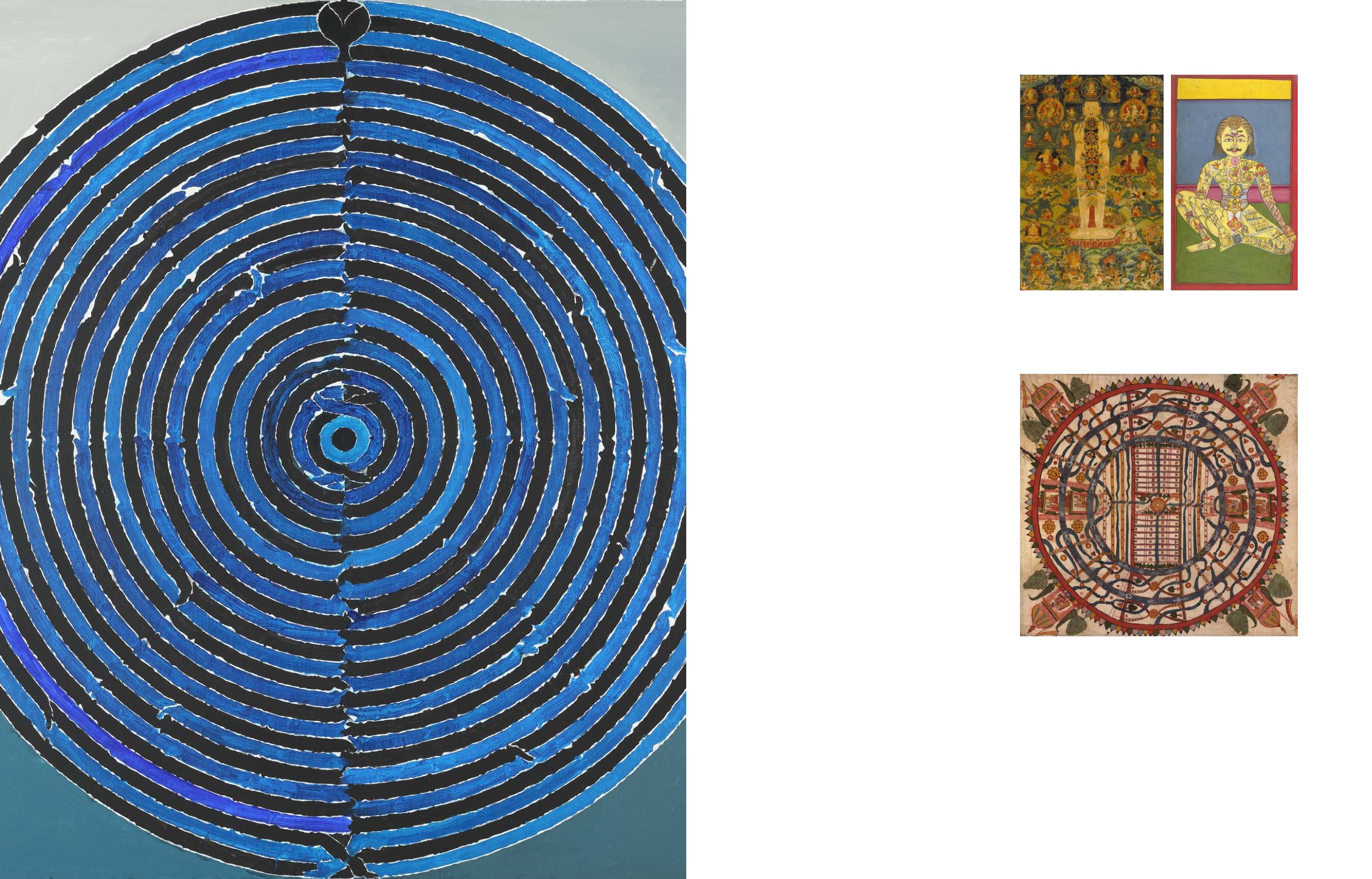

94
95
Raza’s art was his chosen medium for expressing
the spiritual life. He rooted his quest for
metaphysical truths in the study of religious texts
and literature. When he turned from gestural
abstraction towards geometry in the late 70s,
he claimed to have been reborn as an artist.
The circle, which has, through the ages held a
place of reverence in ancient cultures around
the world, became a focal point of Raza’s art.
“Raza’s paintings explore, through the definition
of a few chosen signs of the circle, the square
and the triangle, a sense of the infinite.” (Geeti
Sen,
Bindu: Space and Time in Raza’s Vision
, New
Delhi: Media Transasia Ltd, 1997, p. 110)
Kundalini
, in Sanskrit, means “the coiled one.”
The concept is often depicted as a curled serpent
lying at the base of the spine, representing the
life force that animates all human beings. As
each chakra associated with a different part of
the body is awakened, the human being reaches
a higher level of awareness. Referring to this
concept of spiritual enlightenment, Raza has
often been quoted to have said, “The bindu
awakened a latent energy inside me.” In the
present lot, the
bindu
– the predominant motif
in Raza’s paintings – forms the origin point of the
kundalini
. Concentric circles radiating from the
central
bindu
are formed by a pair of interlocking
serpents, or
nagas,
which are potent symbols
of energy in various mythologies. They are here
incorporated into the circle to depict the cosmos
which contains within it, the energy responsible
for the continuous cycle of beginning and end.
Manusyaloka
, Map of the Human World, 19
th
century
Source: Wikimedia Commons
Cosmic Man with Diagrams of Newar Yogic
Six Chakra Transformation
Central Tibet, 19
th
century, LACMA
Source: Wikimedia Commons
Sapta Chakra
(the seven
chakras
) from a
19
th
century Yogic manuscript
Source: Wikipedia


















